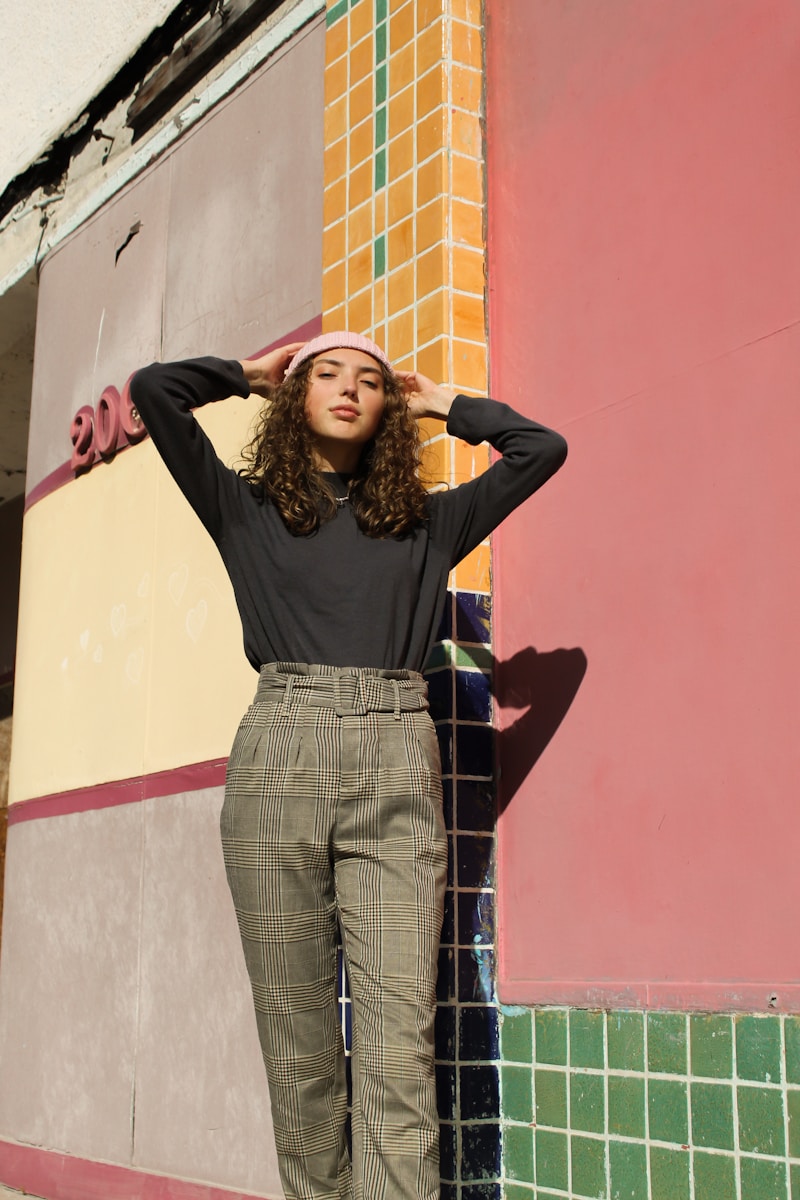In fashion, there are rules — and then there are the exhilarating moments when those rules are broken. If minimalism whispers, mixed prints shout. They interrupt the visual flow, challenge expectations, and invite a certain delightful confusion. At their best, they tell a story that’s bold, unfiltered, and entirely personal.
Welcome to the world of print clashing — an aesthetic that once raised eyebrows but now graces both street style stars and couture runways. From checkerboards with florals to zebra stripes paired with gingham, mixing prints has evolved from a fashion faux pas to an expressive tool of visual storytelling. But contrary to what the chaos may suggest, successful print-mixing isn’t random — it’s an art form, grounded in technique, intuition, and a touch of rebellion.
This essay explores the anatomy of the “clashing formula” — how mixed prints became a cultural style statement, why they resonate so powerfully in today’s fashion landscape, and how anyone can master the method behind the madness.
From Fashion Taboo to Mainstream Trend
Not long ago, wearing two different prints in one outfit was seen as a stylistic misstep. Fashion advice books preached uniformity: stripes go with solids, florals must stand alone, and animal prints were to be used sparingly. Harmony was the goal — contrast was chaos.
But as the lines between high fashion and streetwear blurred, and as fashion moved away from rigid rules into realms of individuality and experimentation, print mixing emerged as a symbol of sartorial freedom. Designers like Vivienne Westwood, Dries Van Noten, and Etro have long celebrated maximalism, layering paisleys with plaids, and baroque patterns with tribal motifs.
Meanwhile, digital platforms like Instagram and TikTok accelerated the democratization of this trend. Influencers and style enthusiasts began posting bold, clashing looks that broke every “rule” — and looked fantastic doing it. Suddenly, the notion of “too much” became deliciously obsolete.
Why Mixed Prints Matter Right Now
The rise of print clashing isn’t just about aesthetics. It reflects deeper cultural and emotional shifts. In a world that often feels disjointed — politically, socially, environmentally — wearing prints that don’t match but still work feels oddly cathartic. It’s a reminder that discord can still be beautiful.
Mixed prints also embody the essence of personal style. While anyone can wear a solid black dress or beige trench, pulling off polka dots with tartan or florals with leopard takes conviction. It’s not about following trends; it’s about trusting your instincts.
At a time when fashion consumers crave authenticity, individuality, and creativity over conformity, print mixing becomes not just a style choice but a declaration of identity.
The Psychology of the Clash
On a subconscious level, our brains are wired to seek patterns and continuity. When we encounter clashing prints, the initial reaction is often confusion — a cognitive dissonance that challenges the brain’s comfort zone.
But that’s exactly the point. When done well, clashing prints provide just enough disruption to keep the eye engaged. They tease the line between disarray and design, creating tension that feels dynamic rather than jarring.
Print mixing works not because it soothes the senses, but because it stimulates them. It invites curiosity, conversation, and a second glance. And in a visual culture defined by scrolling and fast impressions, that’s a powerful thing.
Understanding the Formula: Controlled Chaos
Despite its rebellious spirit, successful print mixing isn’t a total free-for-all. Behind the most iconic clashing outfits lies a formula — a balance of scale, color, and silhouette that anchors the look.
Here are the unspoken rules that help turn print chaos into fashion harmony:
- Color is Your Anchor
You can pair nearly any two (or three) prints as long as they share at least one unifying color. A plaid blazer with hints of red pairs beautifully with a floral skirt that features the same tone. The eye connects those shared shades and reads the outfit as intentional.
Using neutral prints (black-and-white stripes, beige polka dots, navy plaid) as one half of your pairing can also tone down louder patterns, creating visual balance.
- Scale Creates Separation
Pairing a large-scale print with a smaller-scale one helps prevent visual overwhelm. A big, bold tropical motif on a blouse complements a micro-dot pant or a thin-striped skirt. The contrast in scale ensures each print has its own moment.
Avoid pairing two patterns of the same scale unless you’re intentionally going for an ultra-maximalist, head-turning effect.
- Mixing Categories Works Wonders
Pairing prints from different families — say, geometrics with organics — tends to yield more interesting results. Think florals with stripes, camo with polka dots, or paisley with checkerboard. This creates a conversation between structure and fluidity, control and spontaneity. - Silhouette Matters
When clashing prints, keep the shapes simple. A classic button-down, a structured skirt, or a clean-lined coat lets the prints speak without competing with complex tailoring. Let pattern be the drama — not volume, asymmetry, or cutouts. - Accessories Can Be the Bridge
If you’re nervous about going full clash, start small. Try printed accessories — a scarf, a headband, printed shoes or a patterned handbag — as your second print. They create visual interest without dominating the outfit.
Clashing in Practice: Real-World Styling Ideas
For the print-mixing curious, here are a few starter formulas that work across aesthetics and comfort levels:
Stripes + Florals: A timeless combo. Stripes act almost like a neutral when paired with soft florals. Try a striped top with a midi floral skirt and white sneakers for a chic spring look.
Leopard + Plaid: The fashion-world’s favorite odd couple. A red plaid blazer over a leopard print dress, anchored with black ankle boots, makes for a powerful autumn outfit.
Graphic Print + Ditsy Pattern: Combine a bold graphic tee with a micro-floral slip skirt. Throw on a denim jacket for a casual clash that feels modern and balanced.
Polka Dots + Abstract Print: Black-and-white dots paired with an abstract print in complementary colors creates an artsy, editorial vibe. Keep accessories minimal to let the prints shine.
Cultural Mash-Ups and Global Inspiration
Print clashing also resonates because it reflects our increasingly multicultural world. Traditional prints from around the globe — African Ankara, Japanese Shibori, Middle Eastern tile patterns, Indian block prints — all bring their own rhythm and symbolism.
Modern designers are blending these motifs with Western silhouettes or streetwear staples, creating looks that defy cultural borders. This global fusion not only makes fashion more inclusive but also reminds us that mixed patterns can symbolize connection, not just contrast.
Wearing mixed prints can thus become a celebration of diversity, creativity, and cultural respect — a wearable tribute to the beauty of difference.
From Clash to Confidence
Ultimately, pulling off mixed prints comes down to one thing: confidence. There is no print combination so outrageous it can’t work if worn with conviction.
Fashion is a visual language, and clashing prints is its poetry — unpredictable, rhythmic, sometimes unruly, but always expressive. When you mix prints, you send a message that you trust your instincts, that you’re not afraid to stand out, and that you understand style not as a formula, but as a canvas.
In a world that often asks us to tone down, blend in, or follow trends, wearing clashing prints is a stylish form of self-trust. It says: I see beauty in the unexpected — and I wear it proudly.



